Table of Contents
Quercetin (3,3′,4′,5,7-pentahydroxyflavone) is flavanol from the flavonoid group of polyphenols found in many plants.
Quercetin is commonly found in foods such as capers, buckwheat, radish leaves, dill, cilantro, onions, radicchio, watercress, kale, blueberries, cranberries, plums, red wine, and black tea.
And is found in some herbal nootropic supplements including Ginkgo Biloba and St. John’s wort.
As one of the most abundantly consumed flavonoids in your diet, it is estimated that an average person consumes only 0 – 30 mg of Quercetin every day.
Quercetin’s unique biological properties may improve cognitive and physical performance. And reduce the risk of infection.
The antioxidant properties of Quercetin may help fight free radicals. Reducing the cellular damage caused by oxidative stress.
As a nootropic supplement, Quercetin is used to:
- reduce blood pressure
- boost immunity
- fight inflammation
- combat allergies
- prevent infections
- repair a leaky gut/leaky brain
Here, we will investigate how Quercetin works in your brain.
Quercetin helps:
- Neuroprotection: Quercetin may lower the risk of age-related cognitive decline and neurodegenerative disease. As a potent antioxidant, Quercetin has been shown to inhibit the amyloid plaques associated with Alzheimer’s Disease.
- Memory: Quercetin improves memory by boosting mitochondrial function and decreasing reactive oxygen species (ROS) production.
- Heavy metals: Quercetin protects against brain toxicity caused by heavy metals such as lead, methylmercury, and tungsten.
Overview
Quercetin (3,3′,4′,5,7-pentahydroxyflavone) is one of the most abundant flavonoids present in over twenty plant and fruit categories.
Quercetin is known for its anti-inflammatory properties. It’s used to lower blood pressure, control obesity, lower cholesterol, and protect against heart attacks and stroke.[i] [ii]
 The name Quercetin comes from a Latin word “Quercetum”, which means Oak Forest.[iii]
The name Quercetin comes from a Latin word “Quercetum”, which means Oak Forest.[iii]
Quercetin is yellow in color and is poorly soluble in hot or cold water, but easily soluble in alcohol and fats.
Quercetin cannot be produced in your body and must be obtained from food or as a supplement.[iv]
It can be found in citrus fruits, green leafy vegetables, seeds, buckwheat, nuts, flowers, barks, broccoli, olive oil, apples, onions, green tea, red grapes, red wine, dark cherries, and berries.
Quercetin is one of the popularly used bioflavonoids for the treatment of metabolic and inflammatory disorders.
Hundreds of in-vitro and animal studies, and a few human studies have been conducted to study the effects of Quercetin.
Research shows its antioxidant properties are potent enough to treat infections, inflammation, neurodegeneration, and even certain types of cancers.[v]
Quercetin has also recently been found to be beneficial in reducing the symptoms of COVID-19.
A Chinese study showed that Quercetin bound with the spike protein in the coronavirus, reducing its ability to infect cells.[vi]
How does Quercetin Work in the Brain?
Quercetin boosts brain health and function in several ways. But two in particular stand out.
- Neuroprotection – Several in-vitro studies show that Quercetin is a potent antioxidant. And is capable of scavenging free radicals and protecting the brain from damage caused by oxidative stress.[vii]
Quercetin’s antioxidant property is mainly due to its effect on glutathione (GSH), enzymatic activity, and reactive oxygen species (ROS) caused by environmental factors and other toxins.[viii]
- Improve memory – Due to its ability to scavenge free radicals, Quercetin has the potential to reverse cognitive deficits and may improve memory.[ix]
One animal study using mice showed increased learning and memory in the mice who were administered Quercetin with no improvement in the control animals.[x]
How things go bad
Natural brain aging often results in neurodegenerative diseases such as Alzheimer’s, Parkinson’s, and Huntington’s Disease.
But even if you don’t experience neurodegenerative disease as you get older, human aging naturally results in:
↓ Chronic inflammation
↓ Poor memory
↑ High cholesterol and triglycerides
↑ Increased belly fat
↓ Insulin resistance
↓ Mitochondrial insufficiency and dysfunction
↓ Neurodegeneration
Adding Quercetin to your nootropic stack may help prevent neurodegenerative disease and the symptoms typically associated with aging.
Quercetin benefits
Quercetin has the unique ability to increase claudin-4 which seals Tight Junctions and healing a leaky gut or leaky blood-brain barrier.[xi]
Quercetin is a potent antioxidant and may protect your brain from oxidative stress.
In 2014, scientists administered Quercetin to rats within 48 hours of the animals suffering a brain edema. The study showed a high dose of Quercetin administered 48 hrs. after the stroke helped reverse neurobehavioral deficits that were the result of a brain edema (swelling due to fluid build-up). Including a significant reduction in oxidative stress, and a reduction in cellular apoptosis.[xii]
Quercetin protects the brain against toxins by activating the brain’s natural immune system.
Another study in 2013 was conducted to deduce the effect of Quercetin on lead-toxicity. And it showed that Quercetin significantly prevented lead induced neurotoxicity, and oxidative stress.[xiii]
And studies with animals also demonstrated Quercetin’s ability to help preserve brain activity in degenerative diseases like Parkinson’s and Alzheimer’s.
These studies show that Quercetin has therapeutic potential because it can inhibit Aβ aggregation, and tau phosphorylation. And inhibits acetylcholinesterase which in turn increases acetylcholine levels.[xiv]
Quercetin may also boost testosterone levels. UGT2B17 is an enzyme that converts testosterone into testosterone glucuronide – which is then excreted out of your body through urine.[xv]
Quercetin has been shown to inhibit UGT2B17 activity by as much as 72% according to lab studies. Which means supplementing with Quercetin as a nootropic may slow down it’s excretion. And boost levels of testosterone in your blood.
Quercetin also inhibits aromatase which is the enzyme that converts testosterone into estrogen.[xvi]
How does Quercetin feel?
Some of the most recent comments by Quercetin users report a significant reduction in COVID-19 symptoms.
 Those infected with the virus reported using Quercetin with Vitamin C, Vitamin D, and zinc. Their breathing was easier, and this combo helped them recover faster. And this is beginning to be backed by clinical studies as well.[xvii]
Those infected with the virus reported using Quercetin with Vitamin C, Vitamin D, and zinc. Their breathing was easier, and this combo helped them recover faster. And this is beginning to be backed by clinical studies as well.[xvii]
Many neurohackers using Quercetin report a dramatic improvement in seasonal allergy symptoms.
Others claim Quercetin helps reduce muscle soreness after a workout. And arthritis pain is reduced.
Many people said using Quercetin consistently reduced their cold symptoms faster.
Some suffering from allergies say Quercetin is a great alternative to antihistamines without the drowsy side effects caused by these drugs.
Overall, Quercetin users said they were able to breathe easier, experienced less pain, and had more power and stamina.
Quercetin Clinical Research
Quercetin improves athletic performance
A double-blind, placebo-controlled clinical trial was conducted in 2013 in Iran with 26 badminton players. One group was given Quercetin 1000 mg per day for eight weeks. And the control group given a placebo.
The aim of the study was to determine how Quercetin supplementation affects performance, muscle damage and body muscle in badminton players.
Lactate concentration, body fat percentage and VO2 max did not show any significant difference after 8 weeks in either group.
But there was a significant difference in time to exhaustion in the Quercetin group. But not in the placebo group.
The researchers concluded “that intake of Quercetin may improve endurance exercise performance but may not reduce the body fat percentage”.[xviii]
Quercetin reduces oxidative stress
Several animal studies have been conducted to evaluate Quercetin’s effect on oxidative stress.
In one study, oral Quercetin (0.5 -50 mg/kg) was shown to protect rodents from oxidative stress and disorders associated with it.[xix]
Quercetin also protects against the neurotoxicity of several heavy metals.
Three animal studies were conducted on the impact of Quercetin on toxicity induced by lead, methylmercury, and Tungsten.
The results indicated that Quercetin functioned as an effective protector against metal-induced neurotoxins. And could be considered a potent therapeutic intervention to cure cognitive deficits induced by these metals. [xx] [xxi] [xxii]
Quercetin reduces inflammation
High fat diets cause oxidative stress which may lead to neurodegenerative disease.
In one study, a test group of mice were fed high fat diets and given Quercetin. The scientists found that Quercetin reduced the cognitive impairment induced by the high fat diet.[xxiii]
Quercetin has been shown to improve neuronal functional recovery in rats affected with intracerebral hemorrhage (ICH) by inhibiting inflammatory response and apoptosis and promoting nerve function restoration.[xxiv]
Recent studies show that Quercetin reduces the symptoms of Alzheimer’s disease and other age-related cognitive disorders.[xxv]
Quercetin for COVID-19
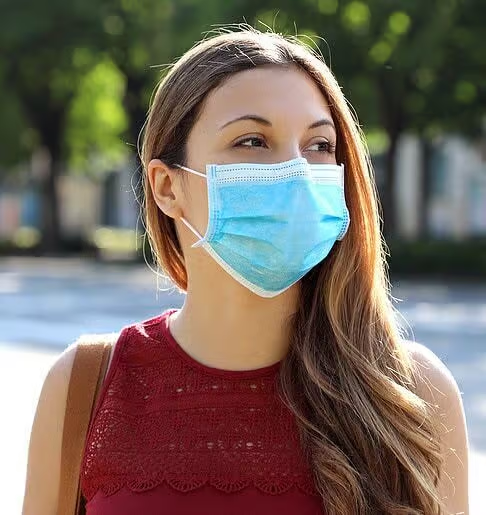 Although the research is limited, the few studies that are present on Quercetin’s ability to reduce the symptoms of the novel Coronavirus indicate it has a significant capability to interfere with the replication of the virus.[xxvi]
Although the research is limited, the few studies that are present on Quercetin’s ability to reduce the symptoms of the novel Coronavirus indicate it has a significant capability to interfere with the replication of the virus.[xxvi]
Quercetin exhibits a wide range of antiviral properties which can intervene in every step from virus entry, to replication, to protein assembly.
The impact of Quercetin can be further enhanced through the co-administration of vitamin C and zinc.[xxvii]
Quercetin Recommended Dosage
The recommended nootropic dosage for Quercetin is 500 mg up to twice per day.
Quercetin dosages of 1,000 mg, and on the advice of your doctor, up to 3,000 mg per day to reduce COVID-19 symptoms. Note that this is short-term use only at such elevated dosages.
Your daily intake of Quercetin from food in a typical Western diet is estimated to range between 0 – 30 mg per day.
Quercetin as a supplement has low bioavailability because it does not easily cross the intestinal wall.[xxviii]
Poor bioavailability is why many Quercetin supplements include other compounds like Vitamin C, bromelain, or other digestive enzymes to help boost absorption.
A more recent development shows increased absorption of Quercetin when attached to a phospholipid complex made from lecithin called Phytosome®.
Quercetin Phytosome® has been shown to be 20-times more bioavailable than Quercetin on its own.[xxix]
Research also shows Quercetin has a synergistic effect when combined with other flavonoid supplements, such as resveratrol, genistein, and catechins. [xxx] [xxxi] [xxxii]
Quercetin Side Effects
Quercetin is non-toxic and is considered well-tolerated and safe when used at recommended dosages.
 Supplementing with more than 1000 mg of Quercetin per day may lead to symptoms like stomach aches, headaches, and tingling sensations.[xxxiii]
Supplementing with more than 1000 mg of Quercetin per day may lead to symptoms like stomach aches, headaches, and tingling sensations.[xxxiii]
Talk to your doctor before taking the supplement if you are pregnant or breastfeeding.
Quercetin inhibits aromatase so if you’re being treated for breast cancer – talk to your doctor before supplementing with Quercetin.
And animal studies show that high doses of Quercetin can have a negative effective on sperm quality and sperm count in males. But only when coupled with elevated oxidative stress.
This hasn’t been proven in humans but it’s worth keeping in mind if you’re having fertility problems.[xxxiv]
Quercetin can also thin your blood. So may interfere or amplify the effects of blood thinning medication.
And there is some evidence that Quercetin could interfere with transplant anti-rejection drugs.
Quercetin has also been shown to be a thyroid disruptor. So if you are hypothyroid or are dealing with any other form of thyroid disorder you should avoid supplementing with Quercetin.
We have no clinical proof that Quercetin is safe to use longer than 12 weeks. The safety of long-term use of this supplement is unknown.
Type of Quercetin to Buy
Quercetin as a nootropic is available in capsules and bags of powder.
You’ll see several brands offering Quercetin + Bromelain because adding a digestive enzyme helps its bioavailability.
And the latest is Quercetin Phytosome® which is Quercetin combined with lecithin-derived phospholipids from sunflower to cross the gut barrier more easily.
NOTE: This review contains affiliate links, and I will be compensated if you make a purchase after clicking on my links.
My preferred brand of Quercetin and the supplement used in our household is: Double Wood Supplements Quercetin.
Nootropic Expert Recommendation
 Quercetin 500 mg up to twice per day
Quercetin 500 mg up to twice per day
I recommend supplementing with Quercetin as a nootropic supplement.
Your body does not make Quercetin on its own. So, to get its benefits you must take it as a supplement. Or rely on the small amount you get from food.
Quercetin is especially helpful for those suffering from allergies, arthritis pain, muscle soreness after a workout, or a cold.
Quercetin seems to be effective according to new clinical studies and several user reviews for reducing the severity of symptoms associated with COVID-19.
NOTE: anecdotal evidence of using Quercetin to reduce COVID-19 symptoms requires dosages of 1,000 mg and up to 3,000 mg per day until symptoms are gone.
Quercetin is non-toxic and is considered well-tolerated and safe when used at recommended dosages. See the “Side Effects” section for more precautions before supplementing with Quercetin.
Since Quercetin in its pure form is not easily absorbed by your digestive system, choose a Quercetin supplement combined with Bromelain, Vitamin C, or Quercetin Phytosome®.
Quercetin as a nootropic seems to be effective starting at 500 mg per day. Dosages above 1,000 mg per day is not recommended for long-term use. Unless specified by your doctor.
My preferred brand of Quercetin and the supplement I recommend for its purity is: Double Wood Supplements Quercetin.

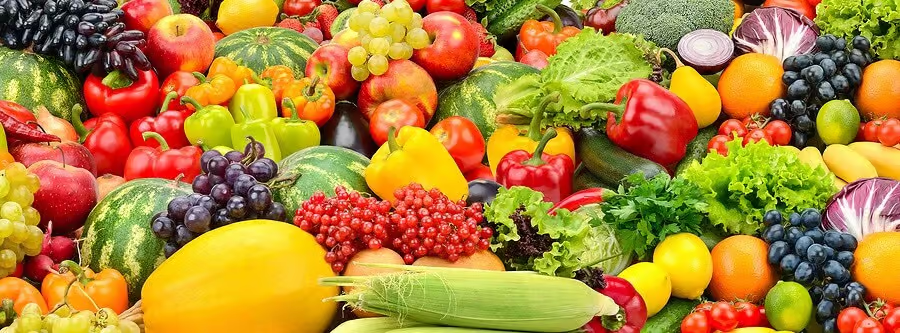



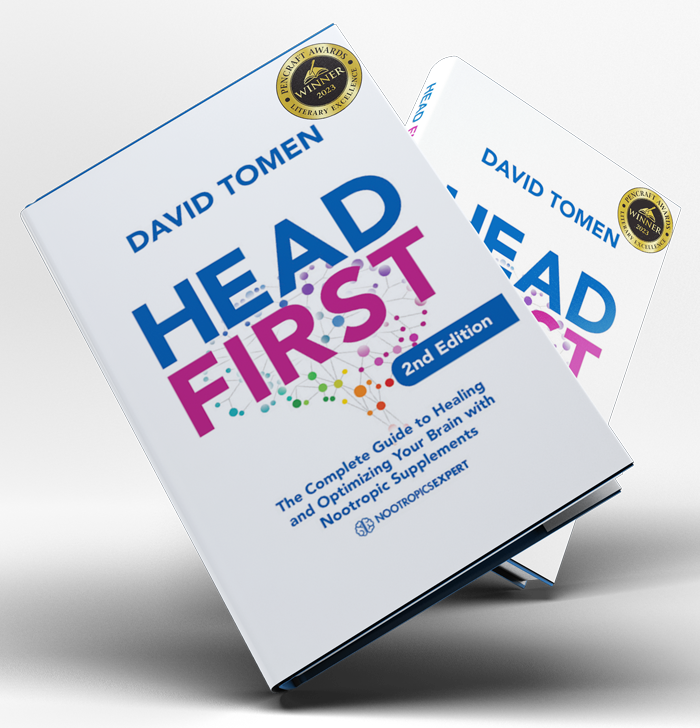
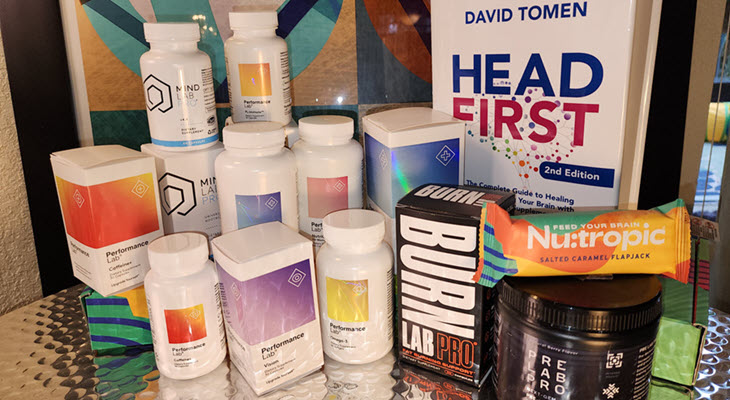
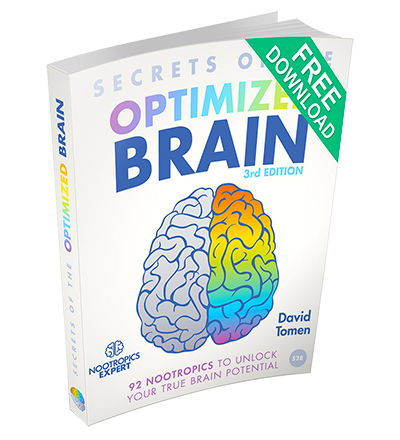
Join The Discussion - 72 comments
Jason
February 23, 2025
Hi David,
I have brain inflammation, my guess it’s cause by auto immune diseases. Quercetin and vitamin c helps a lot. Is there anything else I could add to my stack to combat against brain inflammation?
David Tomen
February 23, 2025
Jason, great question. You have a ton of options to choose from So choose a supplement that provides other benefits as well beside being an anti-inflammatory.
Use the search function top right and do a search for “anti-inflammatory: and then another search for “inflammation”. Make a list and choose a couple that resonate most with you.
Tom Bergey
October 21, 2024
Hi David, I’ve been taking 500 mg of Quercetin for over 5 years now for allergies. Feel great – but my hands are getting arthritis symptoms. Can long term quercetin usage cause arthritis and weak ligaments and tendons?
David Tomen
October 21, 2024
Tom, exactly the opposite. Quercetin helps reduce inflammation which in turn helps reduce arthritis symptoms: https://pmc.ncbi.nlm.nih.gov/articles/PMC9930437/
Jason Shim
April 18, 2024
Hi David,
Quercetin seems to help with my depression but I just started taking it for a few days. I wonder would it stopped working like after 2 weeks. Do I need to cycle it to make it works again?
David Tomen
April 19, 2024
Jason, I don’t quite understand your question. But if Quercetin stopped working after a couple of weeks then try cycling it. Use it for 5 days and take 2 days off. And see if that helps.
Jason Shim
April 19, 2024
Thank you David, yes Im afraid my body would build tolerance to Quercetin after continuous use.
In your opinion which is the most effective anti depressant supplement available?
David Tomen
April 22, 2024
Impossible for me to answer because there are so many causes of depression. It usually takes research and trial and error to find the right natural antidepressant. I’ve not yet come across one supplement that works for everyone to reduce depression.
MT
April 18, 2024
David, thank you for all the great work you do. I was wondering what your thoughts were on the quercetin paradox. Also, I found online sources saying some compounds in it are fat-soluble, but many people just take it without a meal. Do you think absorption would be best if taken with a fat-containing meal?
David Tomen
April 19, 2024
Mickey, as far as I can tell Quercetin is water soluble but as a supplement has low bioavailability and does not easily cross the intestinal wall. Scroll up to “Quercetin Recommended Dosage” for more ideas on how to make it more bioavailable.
Mike
February 15, 2024
quercetin being an ionophore, my mom morning stack :
quercetin : 75 mg (I know, it’s weak)
NAC : 600 mg
zinc : 30 mg
vitamin C : 200 mg (as acerola)
vitamin D3 : 8,000 IU
vitamin K2 : 100 µg
sea buckthorn oil (or) borage oil
Andrew Richardson
August 13, 2023
what should I not touch with MAO enhancing nootropics
I take the standards of what you take to a degree
I take apigenin 50MG twice daily as it can help promote sleep
I want to start quercetin also safe together
the rest of the stuff of DHA, B-vitamins Vit D etc, curcumin, magnesium vit C
if there is anything I should not mix with MAO what is it!
Cheers
David Tomen
August 15, 2023
Andrew, Monoamine Oxidase (MAO) gets rid of dopamine and norepinephrine once your system uses these neurotransmitters. If you increase MOA you will decrease these neurotransmitters even more.
Andrew Richardson
August 16, 2023
sorry I miss wrote what I should have said
i said enhancer instead of inhibitor
I’m taking (Apigenin) which is identified as the principal MAO-inhibitor
Inhibition of MAO-A by galangin was about 36 times more selective than MAO-B, while apigenin selectivity for MAO-A vs. MAO-B was about 1.7 fold. Apigenin inhibited MAO-B significantly more potently
just want to make sure If I am taking MAO inhibitor what I should avoid
I also want another drug for sleeping known as
zopiclone
I need to know if it is safe to take everything I listed in my last comment nootropic wise with an MAO inhibitor thought zopiclone
I take the Apigenin in the morning at 50MG
Don’t know much about anything just just want to double check with someone who know some knowledge
Zopiclone only taking sparingly 4MG max if I have bad night of insomnia
David Tomen
August 21, 2023
Andrew, when you inhibit MAO your force your system to reuse dopamine and norepinephrine. So an MAOI will potentiate anything the directly increases those neurotransmitters. Namely Phenylalanine, L-Tyrosine or Mucuna Pruriens (L-DOPA). If you do not want to increase dopamine or norepinephrine those are the ones you want to avoid.
Benjamin
August 9, 2023
So if I have IBS would taking Quercetin help my leaky gut and leaky brain heal
David Tomen
August 9, 2023
Benjamin, Quercetin has the unique ability to increase claudin-4 which seals Tight Junctions and healing a leaky gut or leaky blood-brain barrier.
Maura
February 18, 2023
David, I immensely appreciate all you do. Highest respect. Out of curiosity, why would high doses of Quercetin cause tingling and in my case also an increase in neuralgia type pain? I’m thinking this is just a detox type reaction and will carry on with my higher dosage and then titration to a lower dosage as symptoms ease. I’m always scientifically curious as to why things work. Thank you so much for any information you may have about this.
David Tomen
February 19, 2023
Maura, scroll up the read the Side Effects section of this review. Because it says “Supplementing with more than 1000 mg of Quercetin per day may lead to symptoms like stomach aches, headaches, and tingling sensations.”
Not sure why that is but Quercetin helps chelate heavy metals and it boosts testosterone.